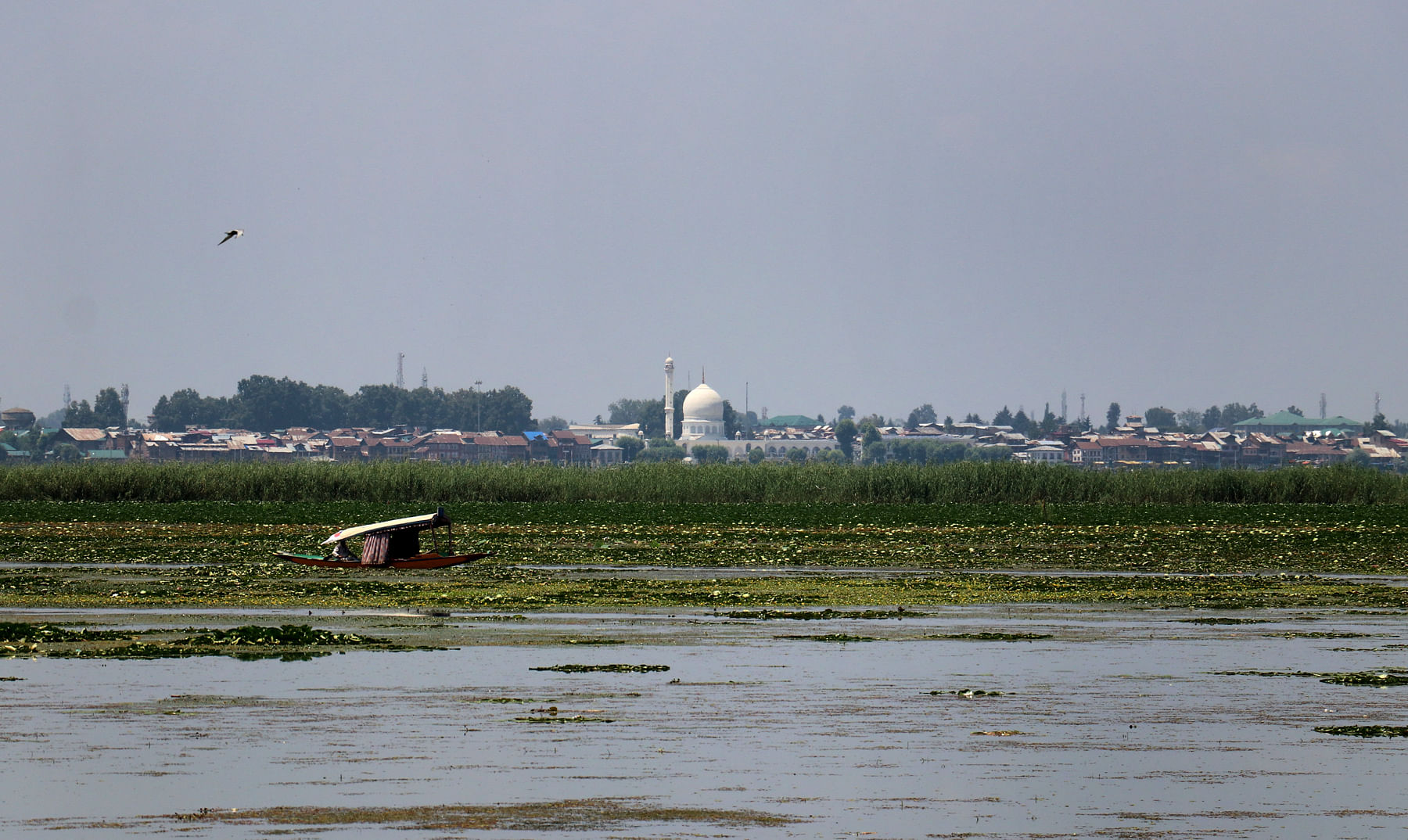The Dal Lake has been ailing for the last fifty years. It has an area of 22 sq. kms with a maximum and average depth of 6 and 1.42 meters respectively. It is well known for its Victorian era houseboats originally constructed as residential floating houses for the British administrators. The catchment area of the Lake comprises Shankarcharya and Zabarwan hills. Till around 1970, the Lake was radiating with clean waters and catering to the domestic, including drinking, needs of the people living in boats and its periphery besides the numerous floating vegetable gardens that would take care of the needs of Srinagar city. There were two man made drainage channels, Mar and Amir Khan nallah, constructed by King Zainulabedin and Amir Khan (governor during Pathan rule) respectively, catering to the flushing and drainage of the lake 24/7 besides serving the water supply needs of the city. The lock gate at Dalgate also helped in the drainage of the lake into the Jhelum river during its low water level via Chunti Kul. Not only Dal Lake but also three city mini lakes; Babedemsar, Khushalsar and Anchar, besides the Nageen Lake were having running clean water and therefore, a potential tourist attraction for their stay in the house boats and shikara rides in the city channels which also included Kitikhul and Sonarkhul besides Mar and Amir Khan nallahs.
The Lake was also home to aquatic sports like boating, swimming and surfing. These channels served the water needs of the city and also facilitated the river transport as the road infrastructure was inadequate. The lakes and channels were full of aquatic life to meet the demand of the fish for the city which is now extinct.
Soon after the conversion of Mar nallah into a road in 1975, the Lake received a massive stroke for want of the desired flushing through the said nallah. Other pollutants entering the lake were the residual fertilizers, pesticides and insecticides from the paddy fields and orchards in the catchment area. The drains constructed by the SMC from Saidakadal to Babedemsar compounded the problem as the people connected the sewage lines to these drains. Same was the case for the habitations living within the Lake body. The chain of hotels constructed on Boulvard and addition of houseboats in the Lake also contributed to the pollution. Other active lakes in the city namely Babedemsar, Khushalsar, Anchar and Nageen connected to the Dal Lake were equally affected. Khushalsar and Anchar lakes have become swamps and encroached upon by the land mafia.
Taking note of the deteriorating condition of the lake, the J&K government in consultation with the Ministry of Environment, GoI engaged Ennex Consultancy of New Zealand that prepared a detailed project report (DPR) in 1978 for the rejuvenation of the Lake which was to be funded by the central government. A separate organization named as Urban and Environmental Engineering Department (UEED) headed by a Chief Engineer was created in 1982 for the implementation of the project. In 1996 Dal lake was delinked from the UEED and entrusted to the newly created Lakes and Waterways Development Authority (LAWDA). By now the original DPR had undergone many revisions both financial and physical.
The milestones for achieving the goal were
- acquisition of land and houses for Dal Lake dwellers and their rehabilitation
- soil conservation of the catchment area
- construction of a settling basin for arresting the heavy silt load from Teelbal nallah
- improving the water circulation system through Amir Khan nallah and an alternative to nallah Mar converted into a road
- selective manual and mechanical crop cut de weeding
- treatment and disposal of peripheral and houseboat sewerage.
Treatment plants constructed for the peripheral sewerage are reportedly not giving the desired results. In the case of house boats, the owners are not ready for the relocation which would enable putting in position the integrated sewage treatment and disposal through bio digester plants. Make shift alternative to Mar nallah was made at new Fatehkadal by constructing a sluice gate which is functional only during the low water level in the Jhelum river. The pollutants continue to pour in the Lake and it continues to be on the sick bed.
All these forty years despite the cost overrun, and a number of reappraisals by the GoI sponsored consultant namely Alternate Hydroelectric Center, IIT Roorkee in 2002, side lining the available talent in the NIT and the Universities and engagement of another Roorkee based consultant for preparation of a Vision Document, monitoring by the J&K High Court and Committee of Experts which has no local representative , the Dal Lake to a common man appears to be as it was forty years back. Day in and day out the LAWDA is seen confronted by encroachments and violations diverting its focus from the main task of the rejuvenation of the Lake. The major challenge to the Lake is from the Dal dwellers amongst whom hardly 50% have been paid compensation and rehabilitated during the last forty years. Unless the dwellers are paid in one go and allowed to choose the rehabilitation of their choice, the desired goal cannot be achieved.
Neither the UEED nor the LAWDA have been able to restore the Lake to its original position for the last forty years. It therefore, warrants setting up of an all powerfull authority with representatives of the stake holders and fix a time frame for achieving the main goal of rejuvenating the world famous Dal Lake.
Er. S R S Madni, formerly Secretary to J&K Govt.






